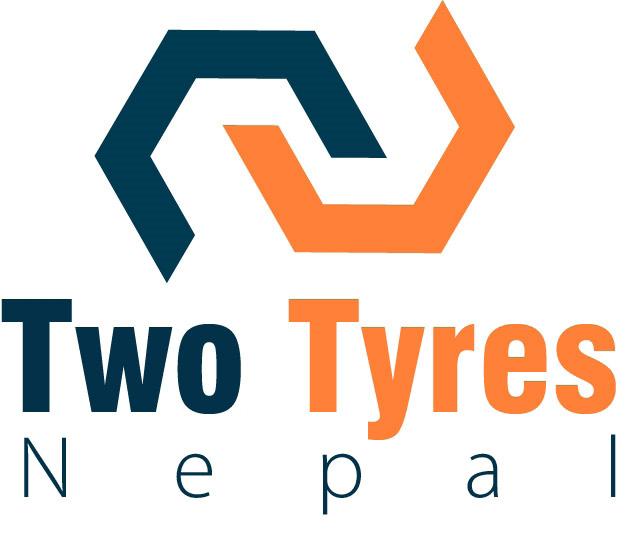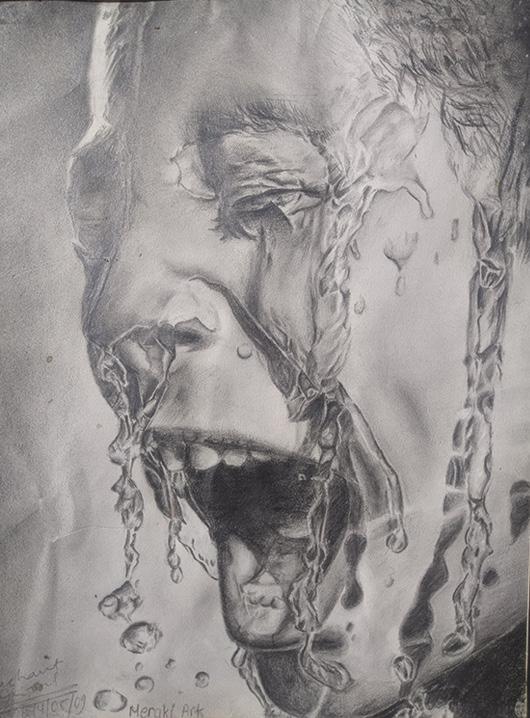
7 minute read
The School of Hope
School Design Project-Thesis
At the center of the design philosophy, the creation of a vibrant learning community is focused upon, catering to a diverse array of learning styles and preferences. Analogous to the way a community thrives on interconnected relationships, where passions are immersed in by individuals and meaningful exchanges are engaged in, a parallel concept is unfolded within the architectural composition of educational spaces. The ultimate aim is to surpass the conventional schooling experience, thereby transforming it into a source of genuine joy and connection, allowing the very act of navigating the school environment to be effortlessly associated with a profound sense of happiness. This leads to the core of the architectural vision – the crafting of a learning environment where extensive, open expanses inviting exploration are seamlessly blended, carefully designed narrow pathways that ignite unexpected encounters, tranquil pockets suffused with the healing embrace of nature, welcoming courtyards intended to encourage exploration, and adaptable layouts that not only accommodate but also ignite innovation.
Advertisement
Spaces Typologies
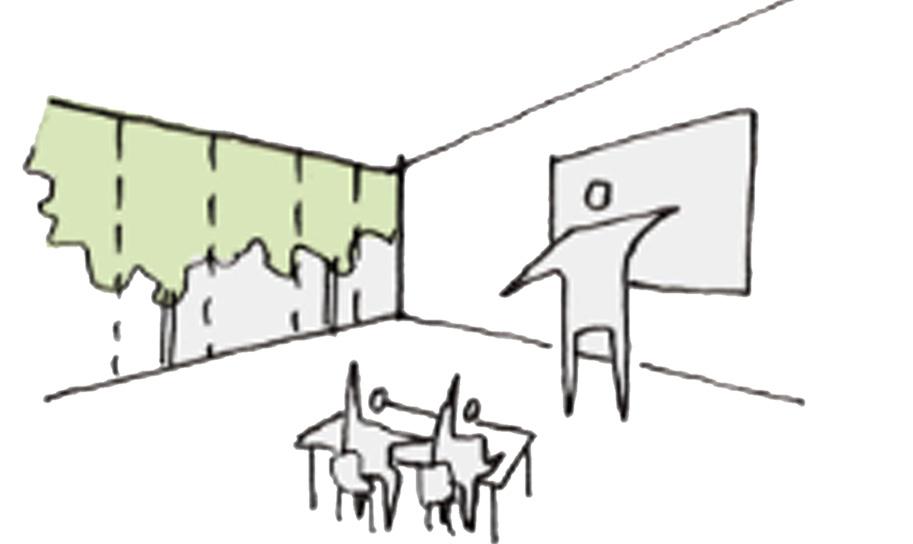
Ground floor plan
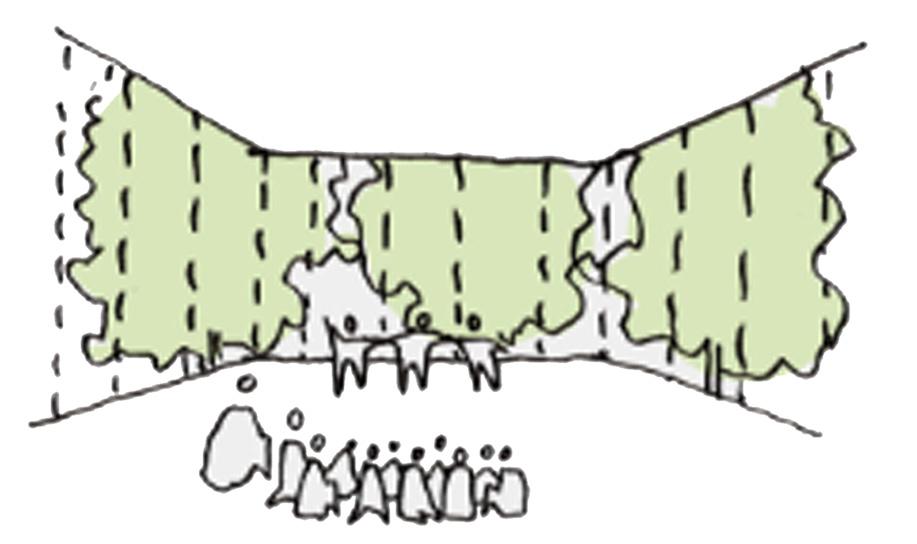
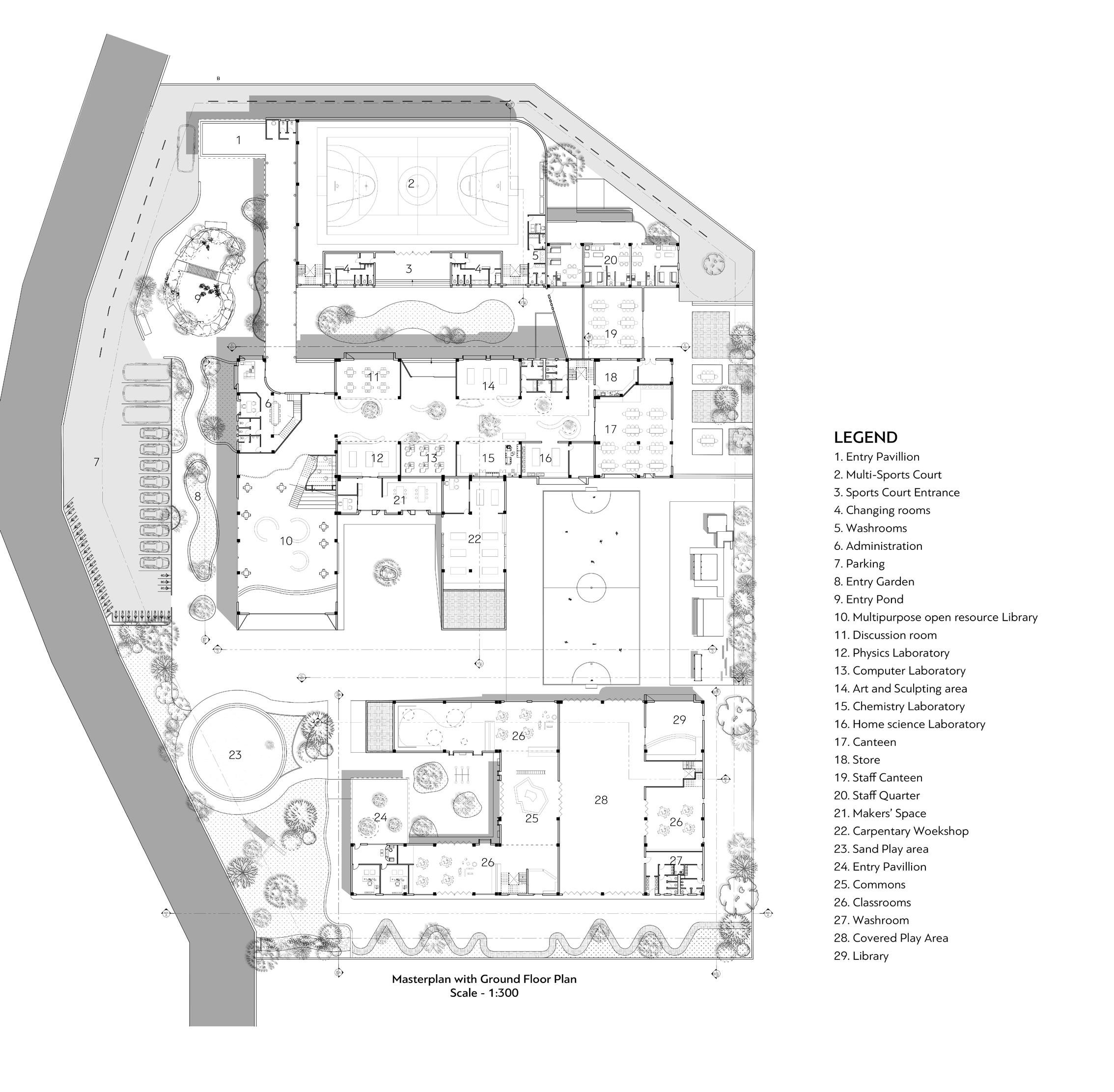
The collaborative space or a a “Campfire” .In this space a teacher or a student delivers something and other sit around, listen and get inspired.
The restorative spaces includes natural spaces and playground where student can learn through exploration.
The reflective spaces - Break Out spaces are for the quite learners and thinkers, It is the space provided for self-reflection and improved focus.
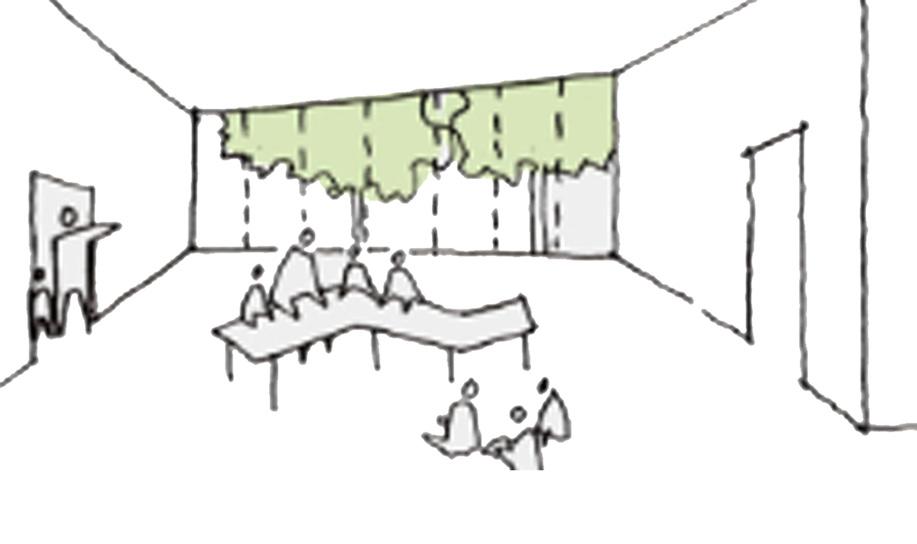
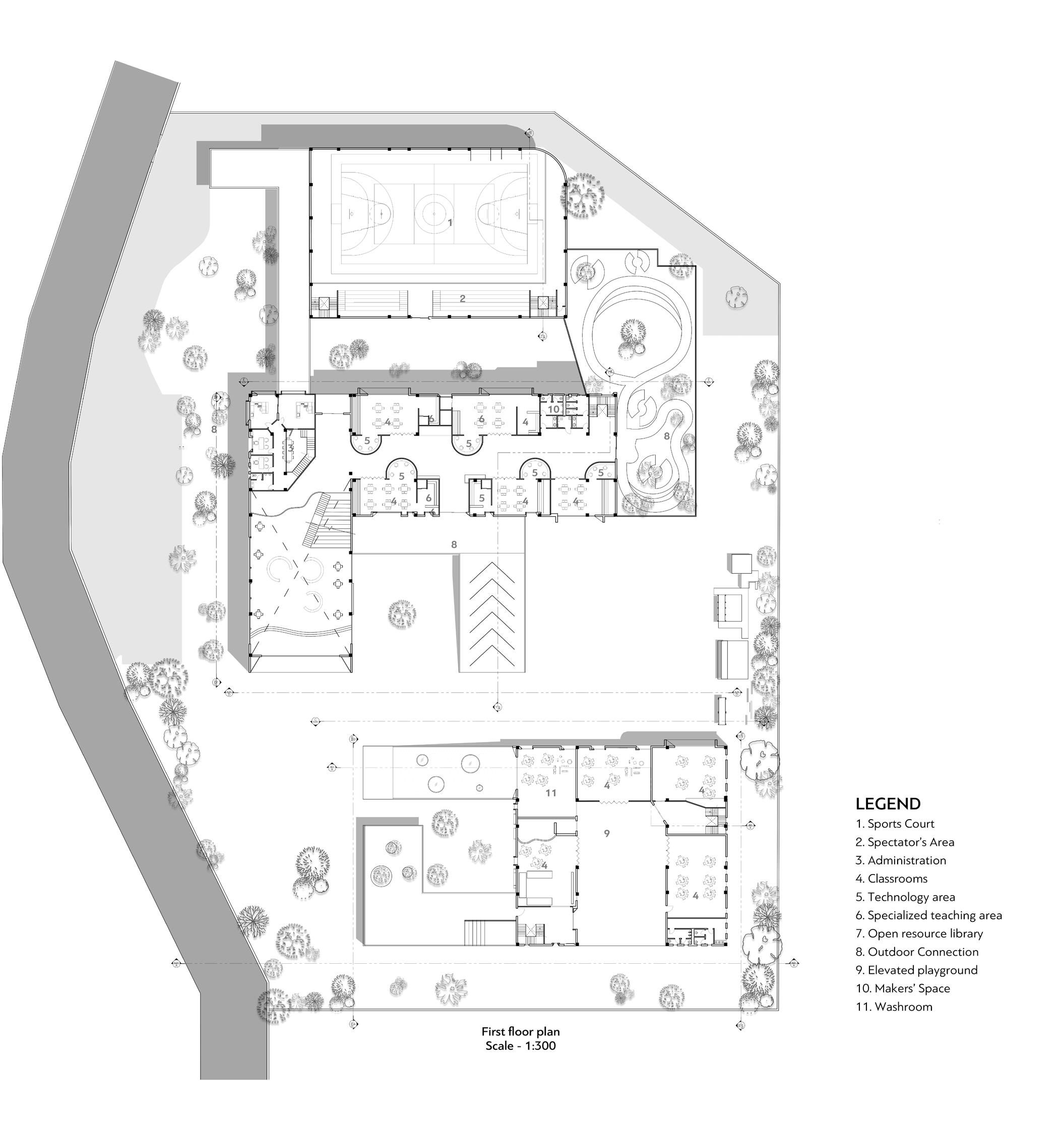
Realization is the project-based learning module where student actually experiment and research to gain knowledge.

Axonometric 3D visualization

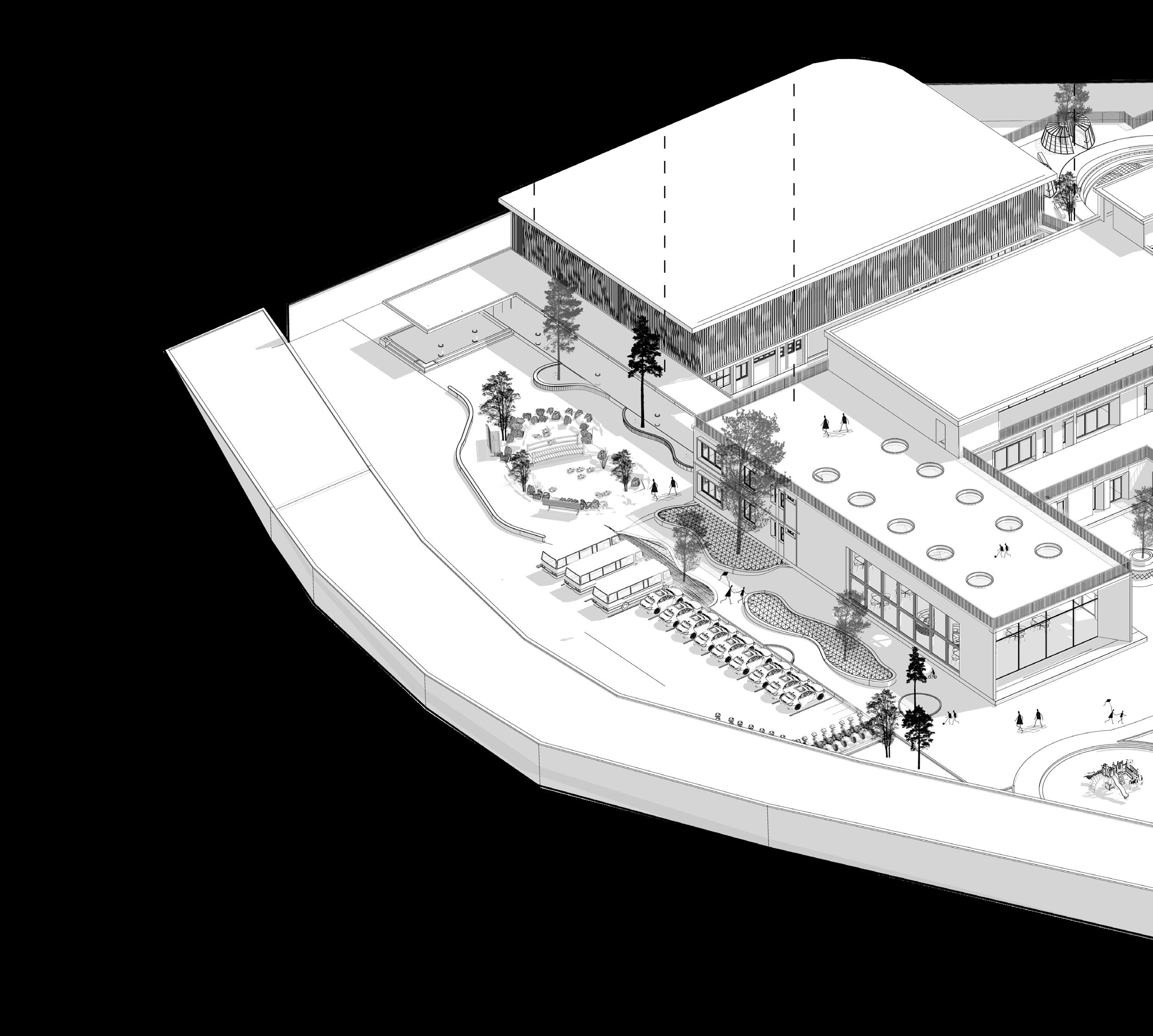

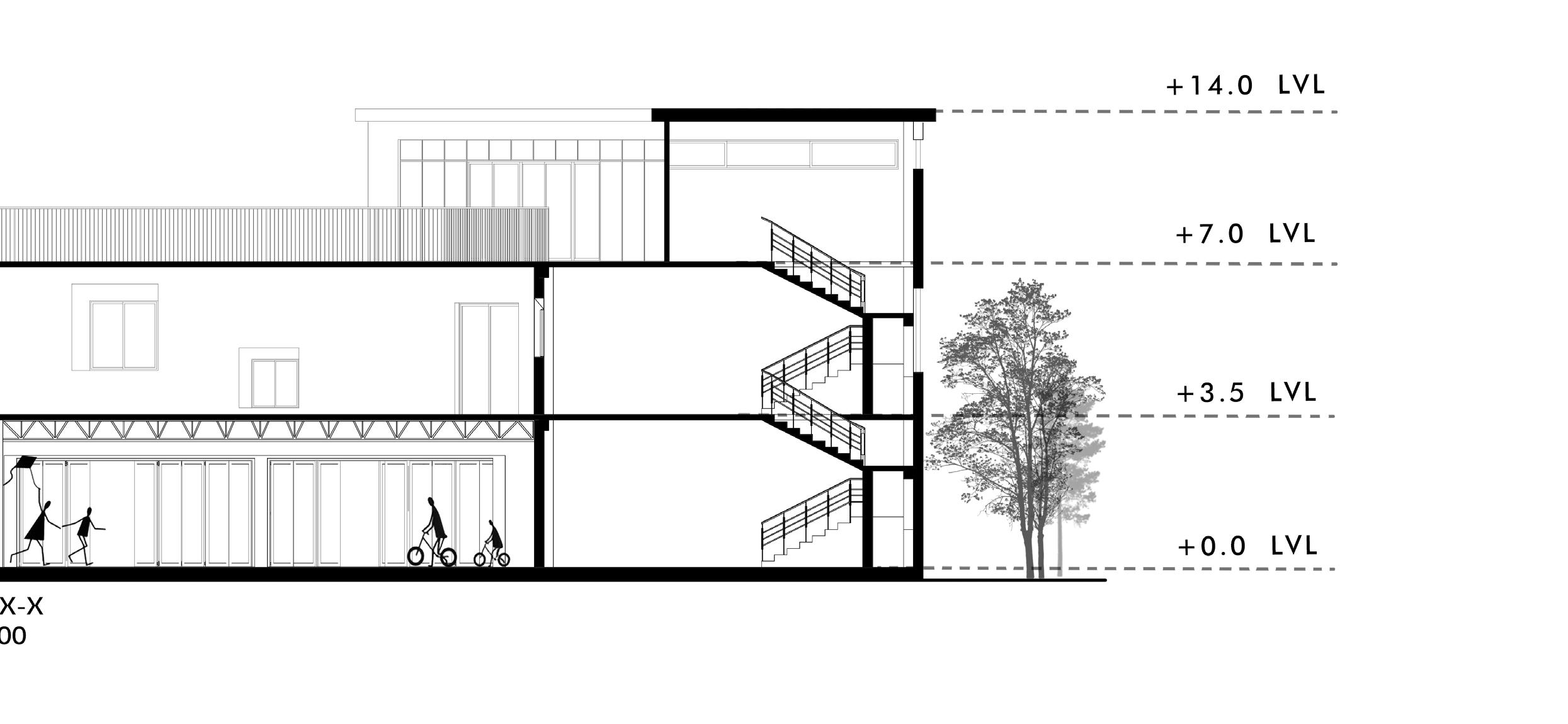
Interactive courtyard spaces
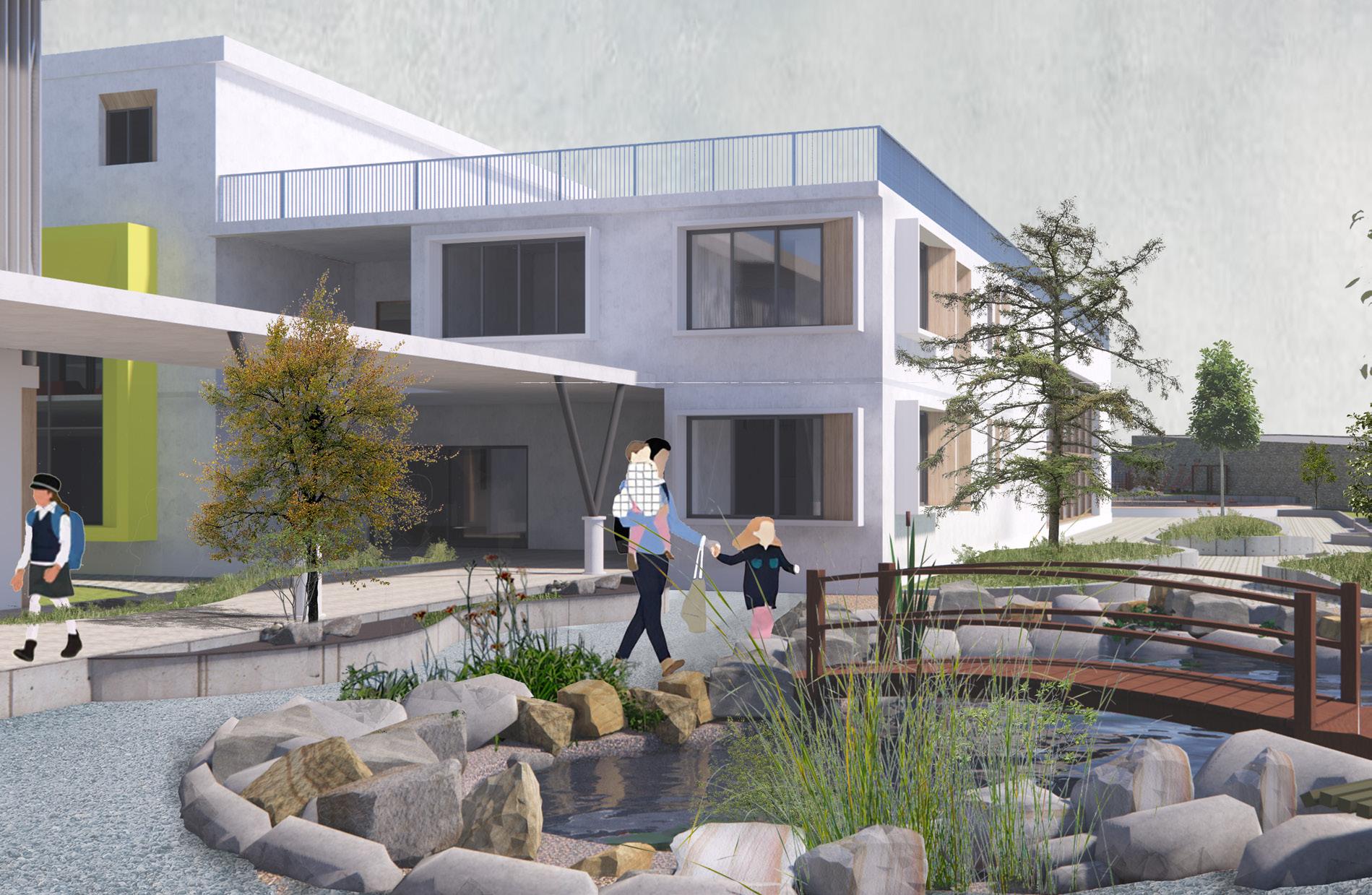
Entry Courtyard and Pond

Classroom Typologies

Classroom Typology 3d Visualization

Interactive Elevated Learning Area
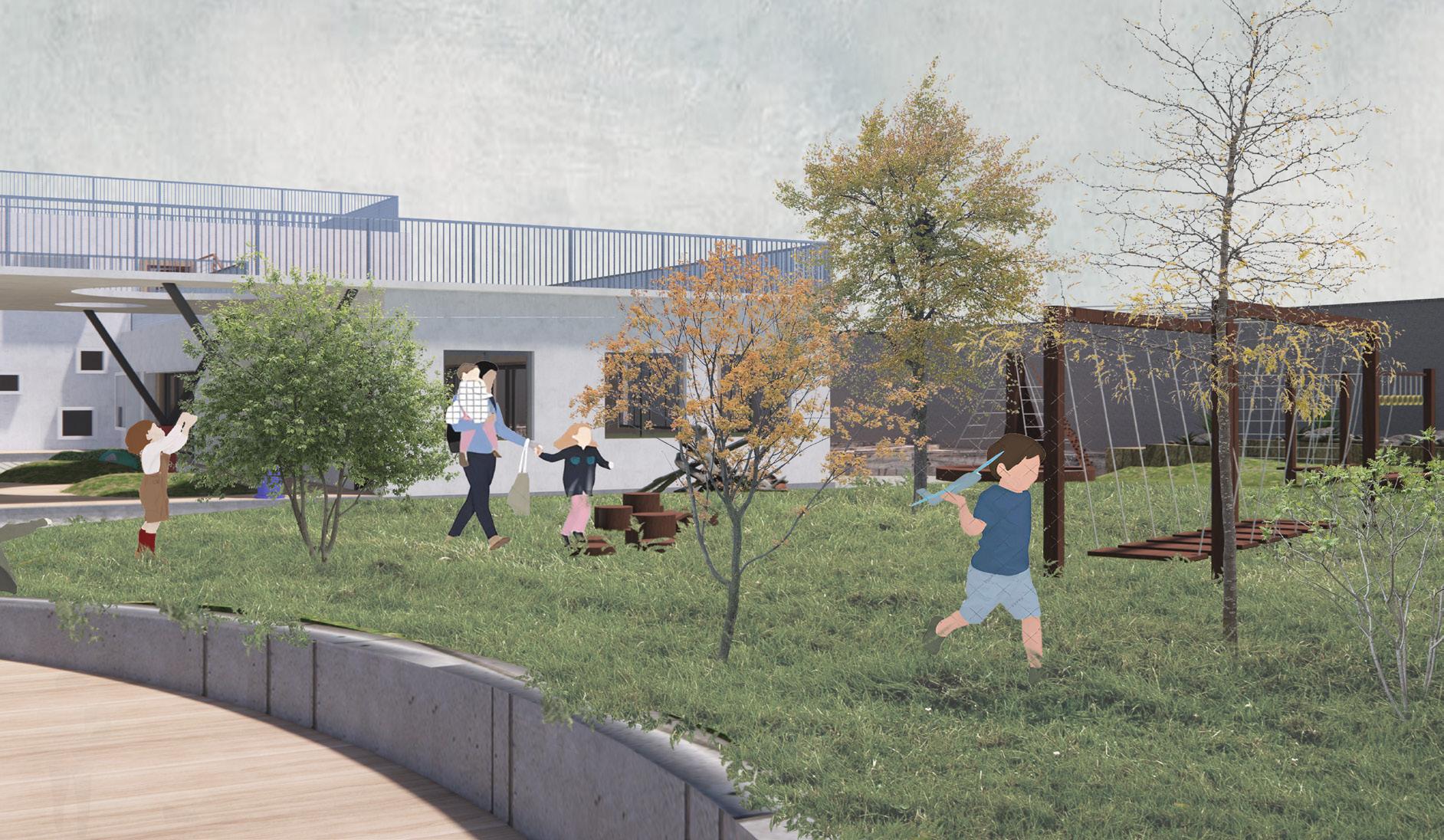
Pre Primary Learning Area
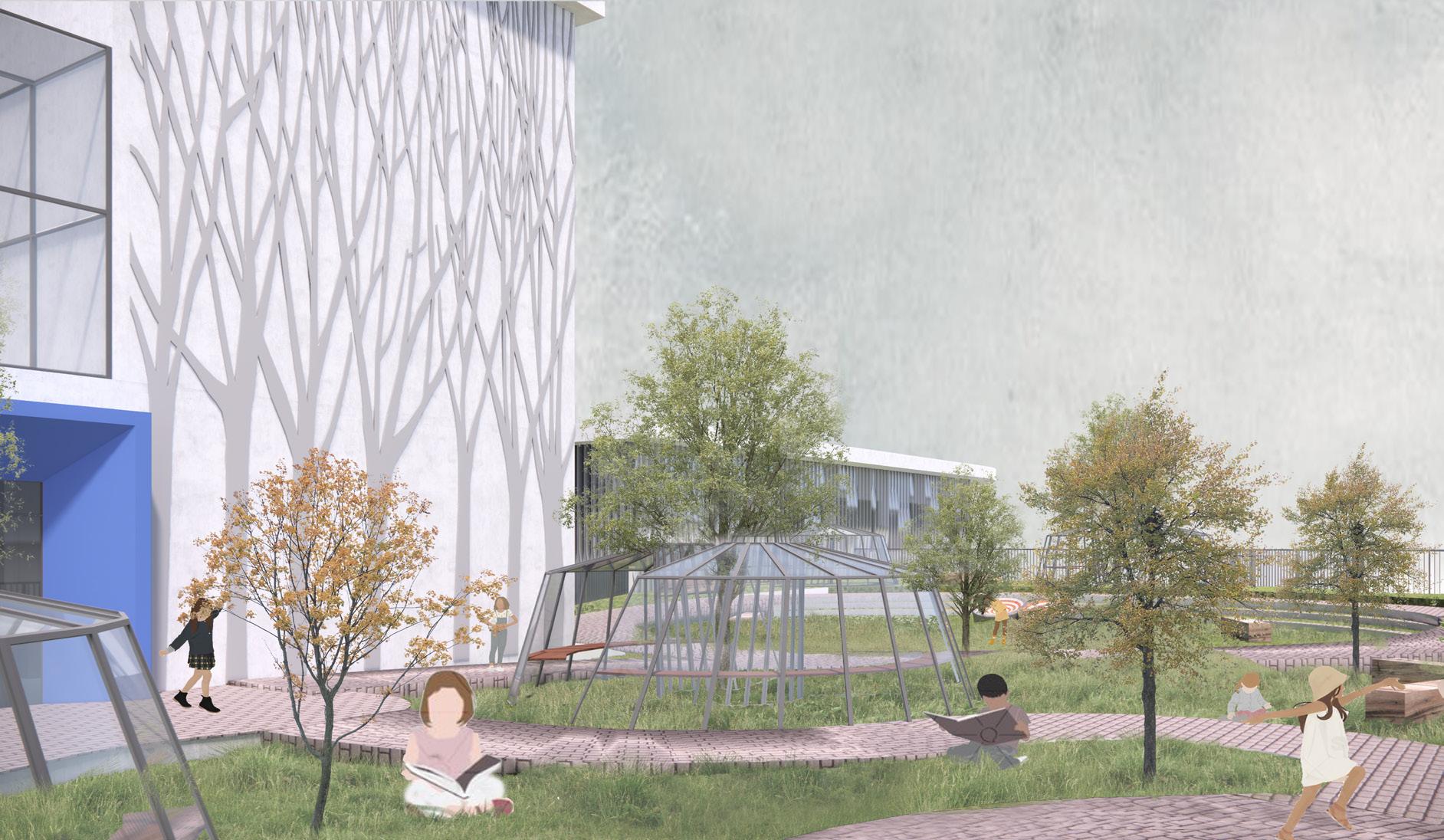
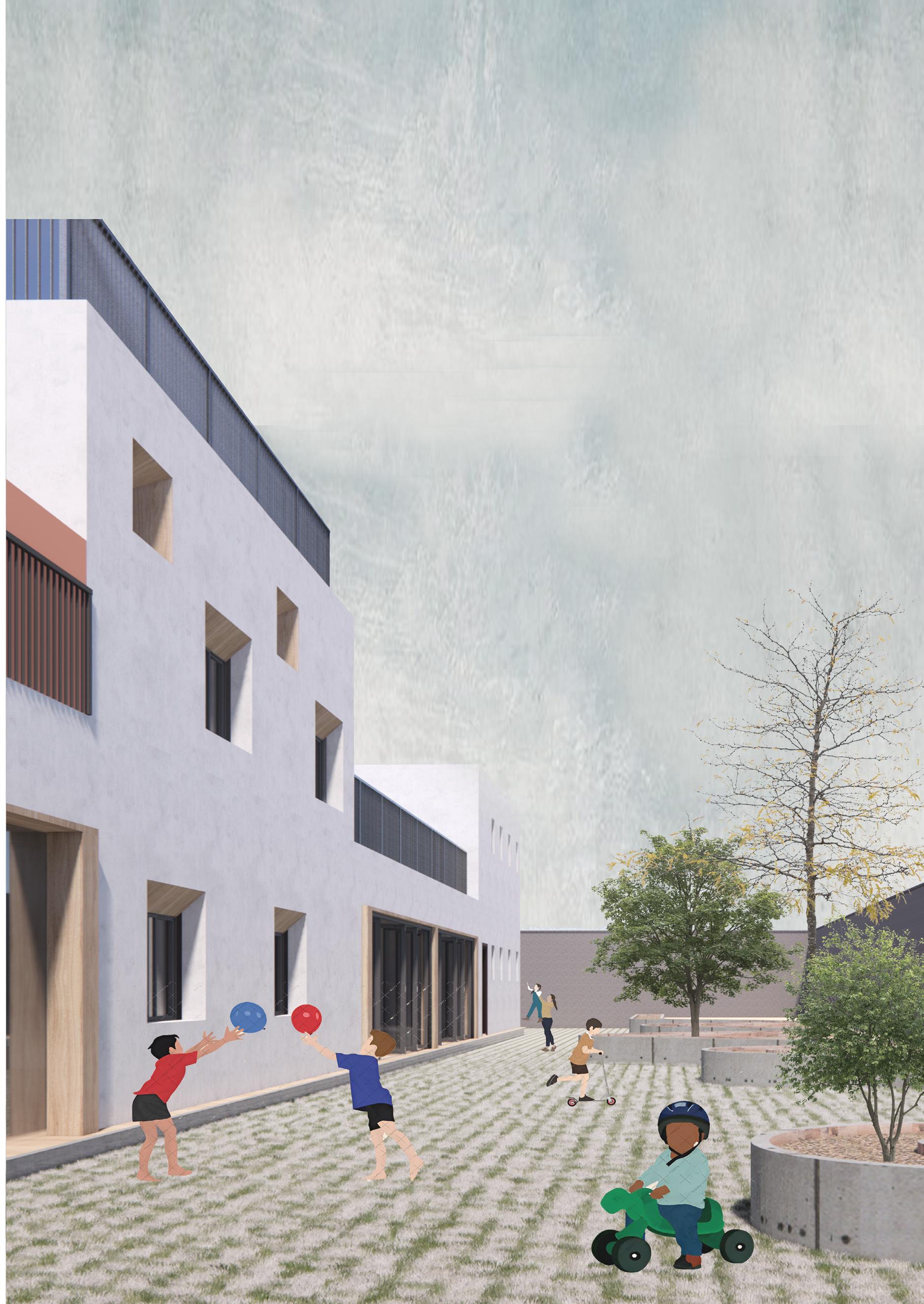
Modular Living In Ichangu
Typology: Apartment Building
Location: Ichangu Narayan, Nagarjuna Municipality
Client: DUDBC
Type: Design Competition(Top 5)
A situation has begun to be witnessed in Nepal. where land shortage, if not addressed now, is threatening to produce major problems in the future. For the same,Ichangu housing project has been suggested, in which land owners in Nagarjuna Municipality would be furnished with apartments at a very low rate.The housing project is aimed at people with fewer than 2 aanas of land on which is not suitable for settlement. As a solution, government of Nepal offered a program where small piece of land is replaced with equivalent apartment space based on the price and requirements. The design concept is centered on the idea of making maximum use of vertical circulation. Along with the vertical circulation, the residents are provided with a sense of community and friendliness between them-selves. The modular facade allows renters to customize various aspects of their building, giving them a sense of ownership. The low-cost approach, paired with the tenants’ choice, results in a building with a rhythmic facade, as well as cost effectiveness and comfort.
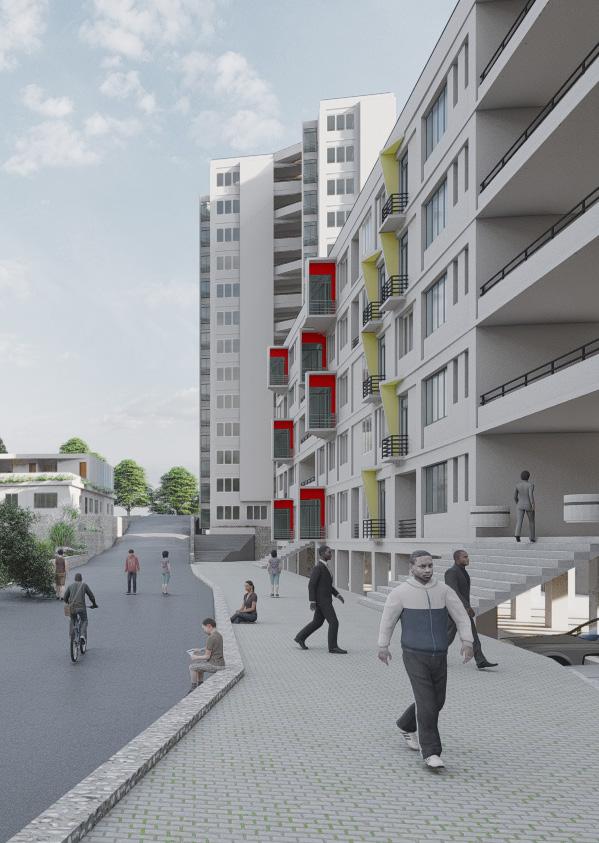


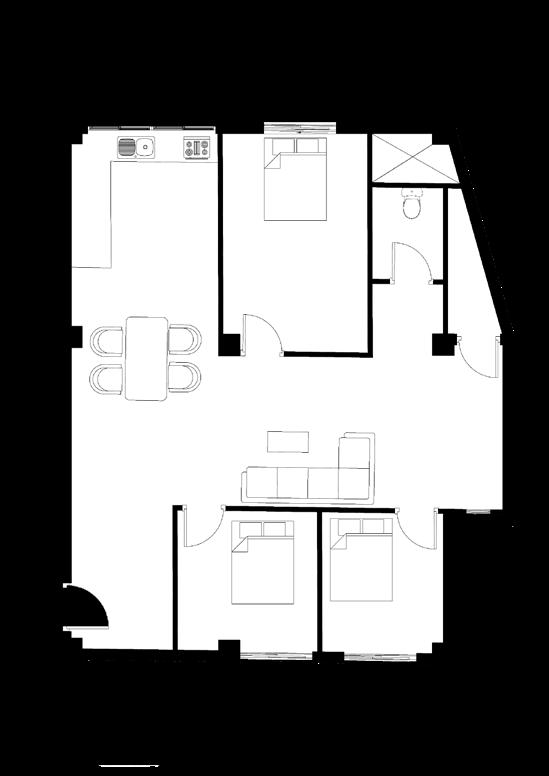


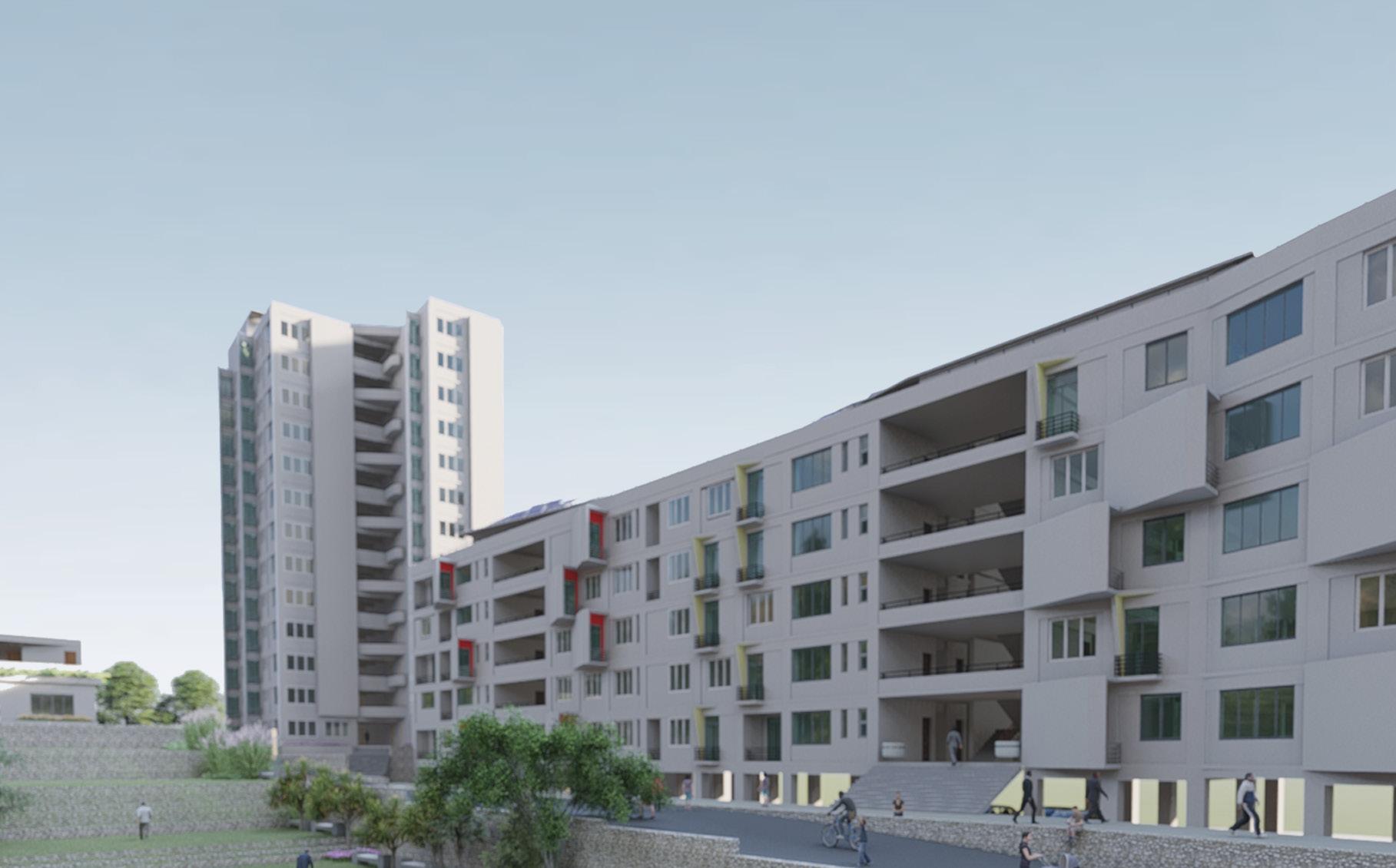
The modular design approach with the use of prefabricated components allows users to decide some part of the design by themselves as per their liking and cost resulting a participatory design approach





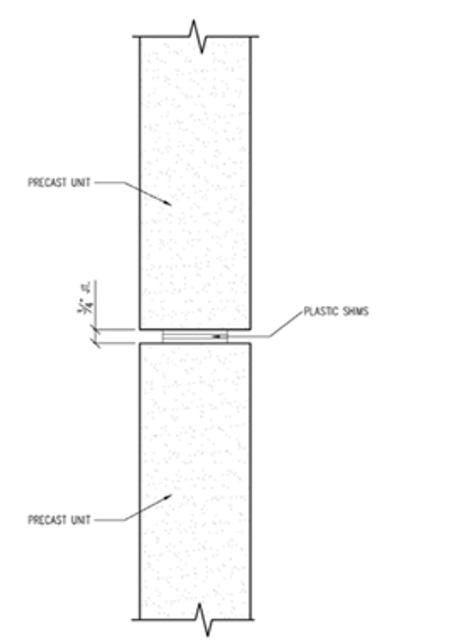
Affordable Living In Terai
Typology: Low cost Residential
Location: Terai
Client: Habitat for Humanity Nepal
Type: Design Competition(Second runner up)
Land Shortage and the skyrocketing price of housing are one of the most pressing issues in Nepal. Especially in some parts of the Terai region where people are economically backward, the need to address the housing problem is a must. Furthermore, the slow decline of the vernacular essence in housing is also one of the major problems. To address the same an affordable housing proposal has been proposed that uses sustainable techniques, a vernacular approach, and incremental housing principles to provide residence for the marginalized community of the inner Terai region. The design attempts to create housing for people with prices below 6 lakhs.
To tackle the same, local construction technique wattle and daub, and earthbag is used so as to reduce the price of housing while preserving the vernacular essence and adopting sustainability feature. The spaces and planning are done as per the layout in which the centrally placed Kitchen and living area are constructed up of solid earthbag house. The core and the most used portion of the house are secured thermally by placing rigid walls and bedrooms around it. The core of the house (Kitchen and living room) connects all the bedrooms and porch making the most important of all space.


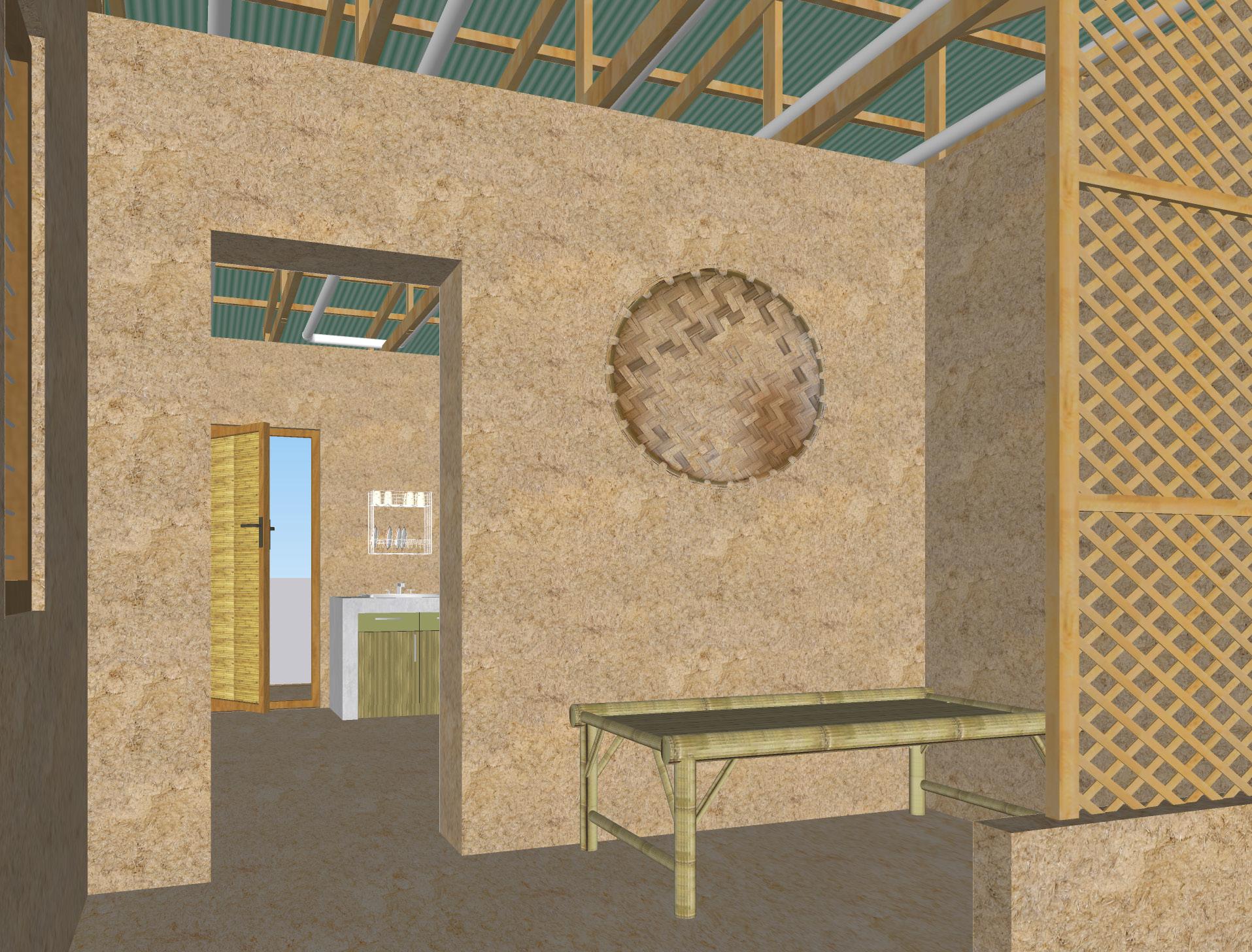
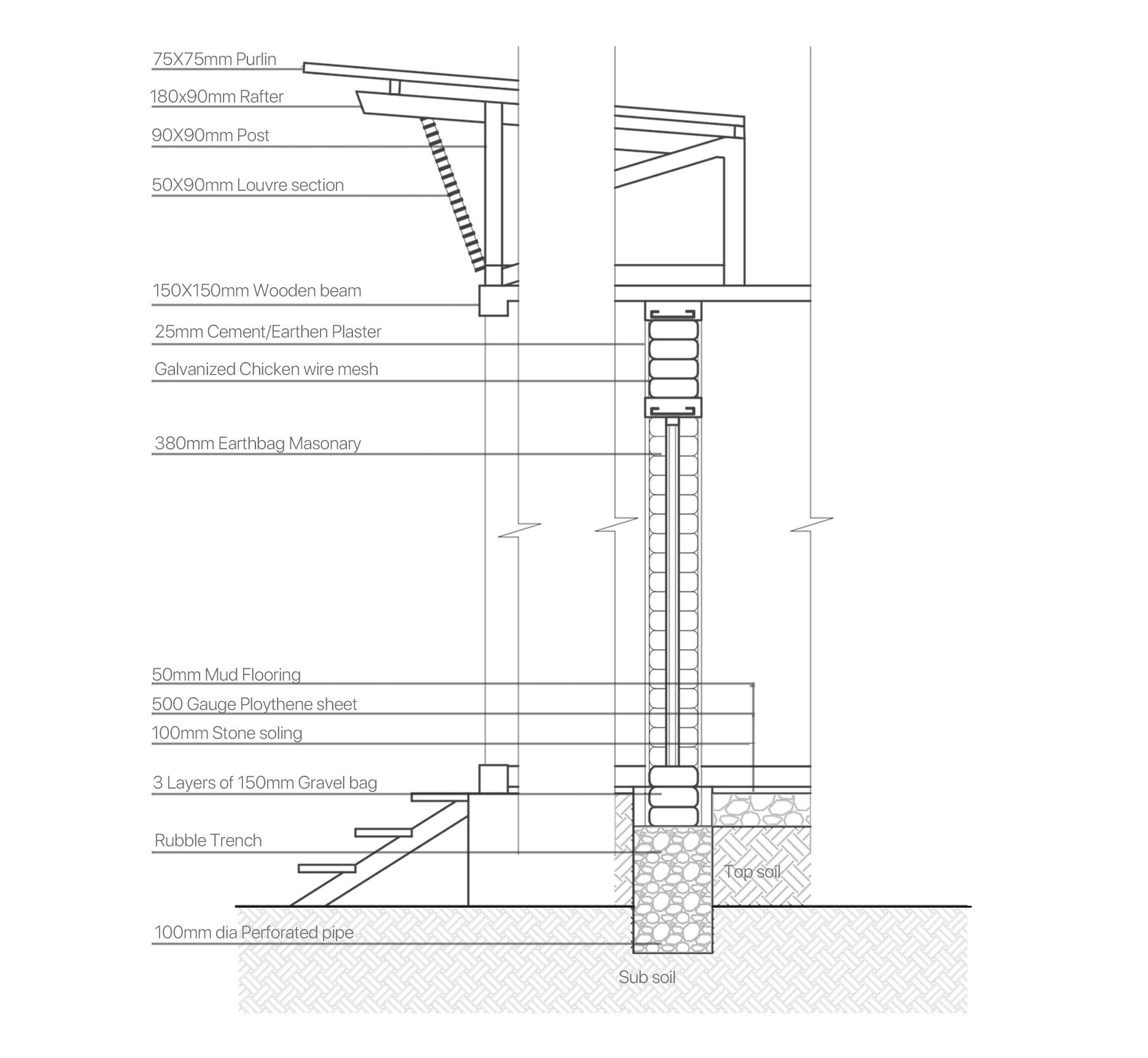

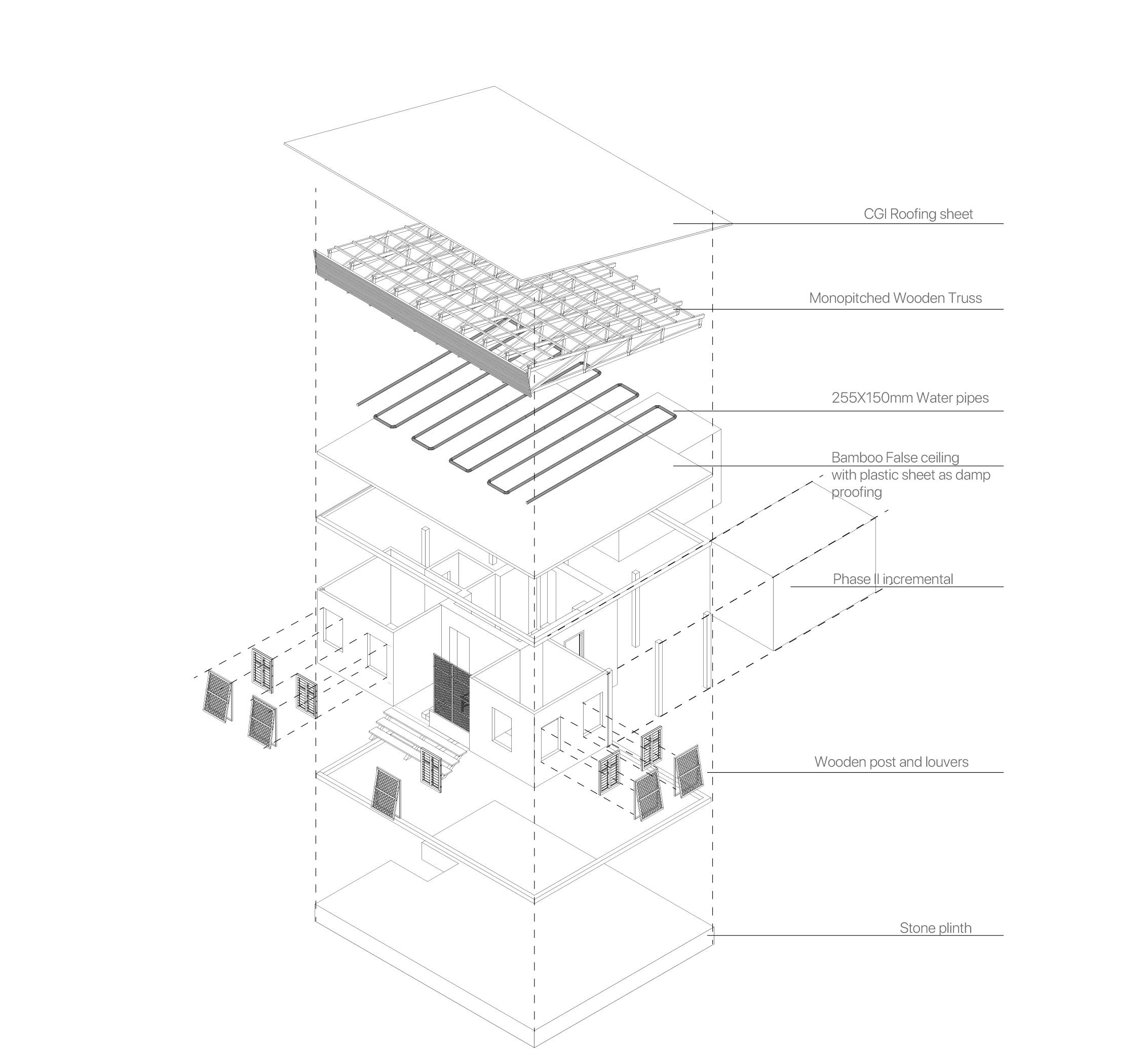
Integrated Rural Housing Design For Earthquake Affected People In Dolakha
Incremental housing design

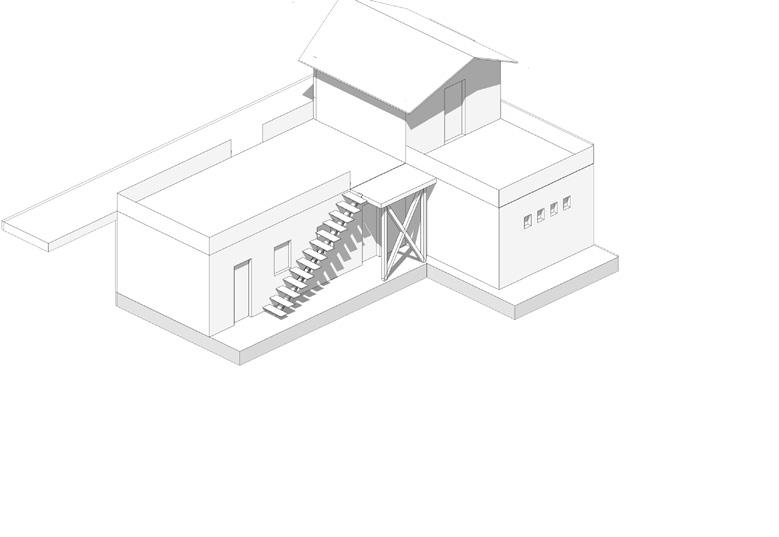
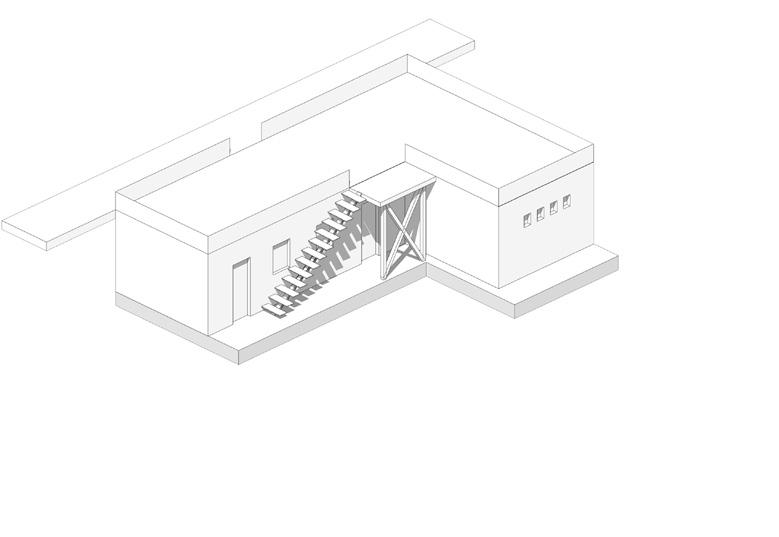
Typology: Rural Housing
Location: Boshimpa, Dolakha
Client: Local resident
Type: Design Studio VII
The integrated settlement of Panipokhari is built for the earthquake affected Thami community of Bosimpa village. The settlement is located 45 minutes from Bosimpa. Panipokhari is a government-owned land with a total area of 75 ropanies. When the plan to resettle people to Panipokhari was brought by Nepal Reconstruction Authority (NRA), there were 74 families ready to move to Panipokhari. In the first stage of the program, infrastructure like roads, retaining walls, etc. were constructed. But the budget was insufficient and only half of the work was completed with the initially allocated budget.
The land plot was too small for many families so they decided to settle elsewhere. The same problem was to be address to revise and redesign the proposed housing in the Pani pokhari. The existing space was not sufficient and for the larger space people are not economically capable. So, The incremental housing model is proposed in which some part of the house is designed and constructed by the government whereas the rest of the portion of house should be constructed by the houseowners themselves. Keeping the same thing in mind the typologies were developed. Local materials and technologies like bamboo , mud and load beading constructionwere used to make the residence a low cost one.









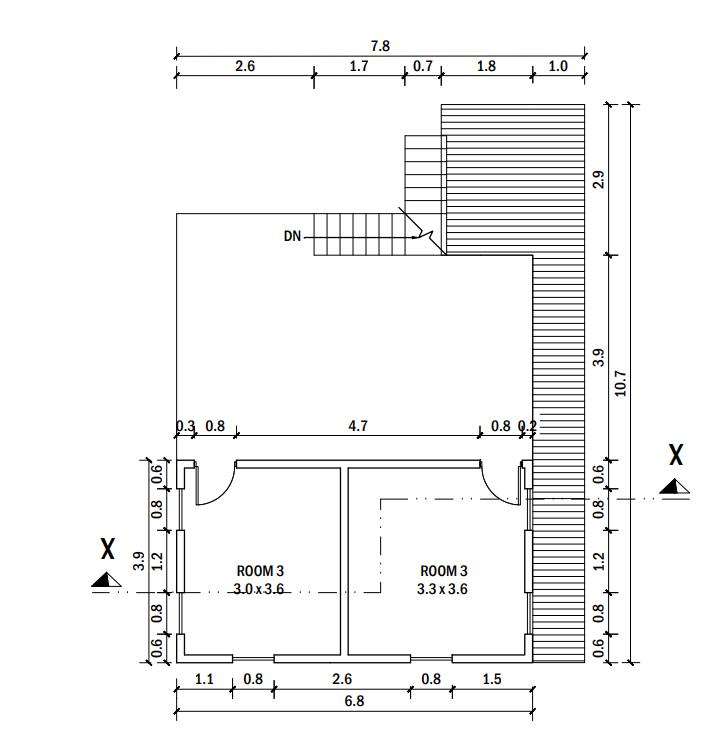
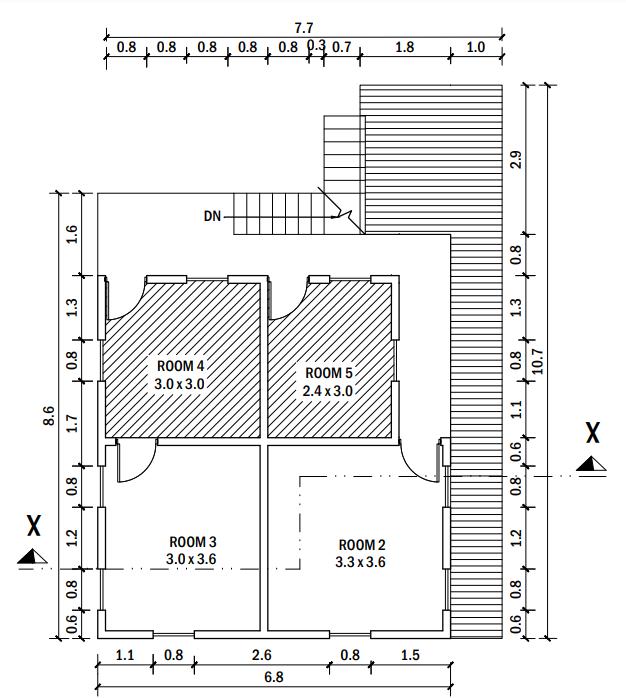
Typology 1
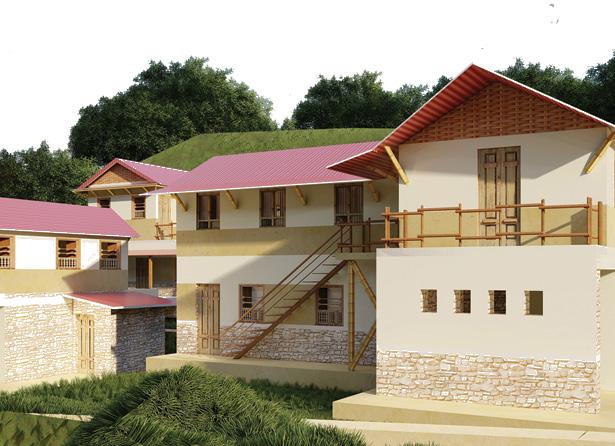
3d visualization
Typology 3
3d visualization

Typology 1 section (Not in Scale)

Typology 3 section (Not in Scale)
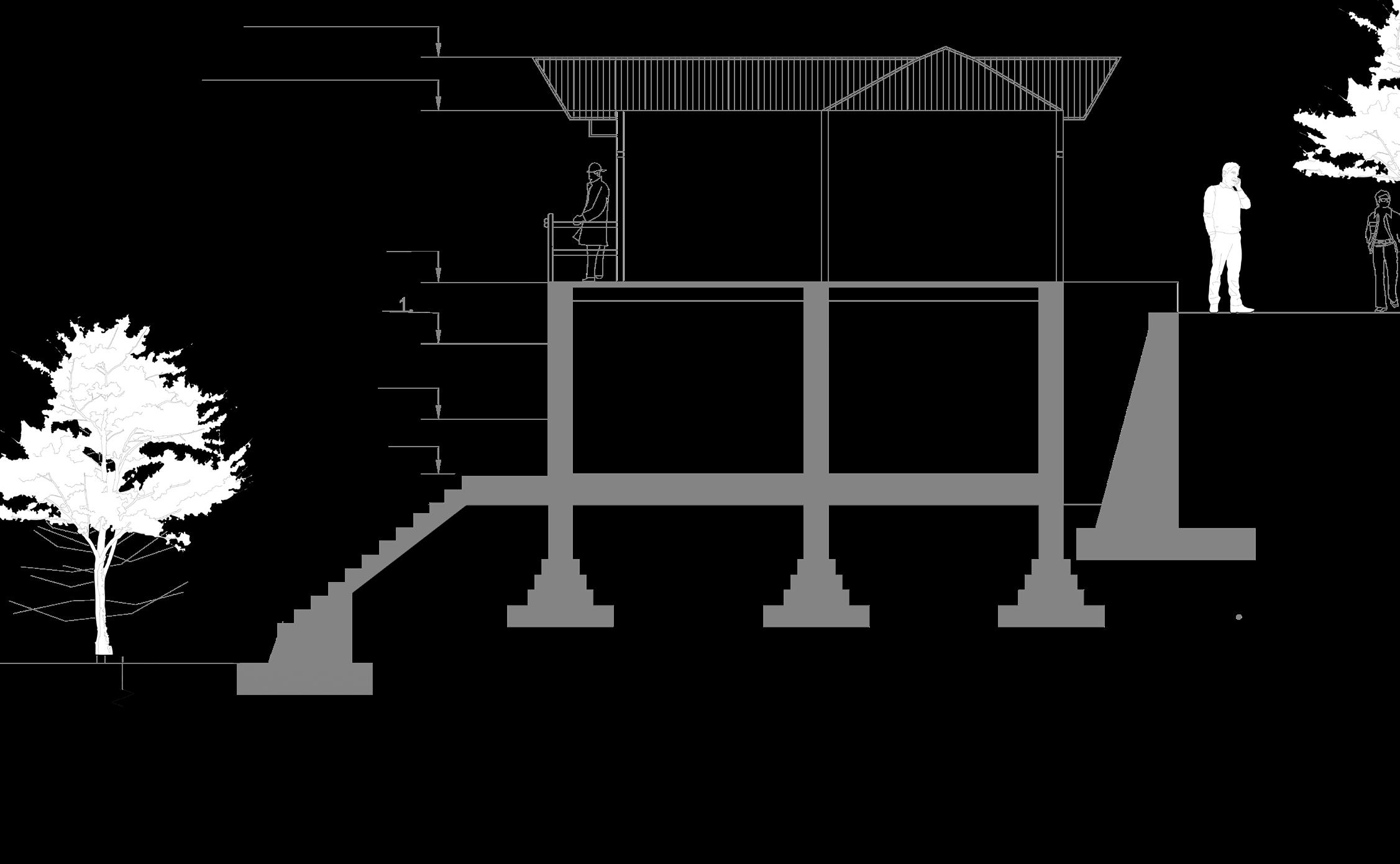
Typology 2
3d visualization
Typology 2 section (Not in Scale)
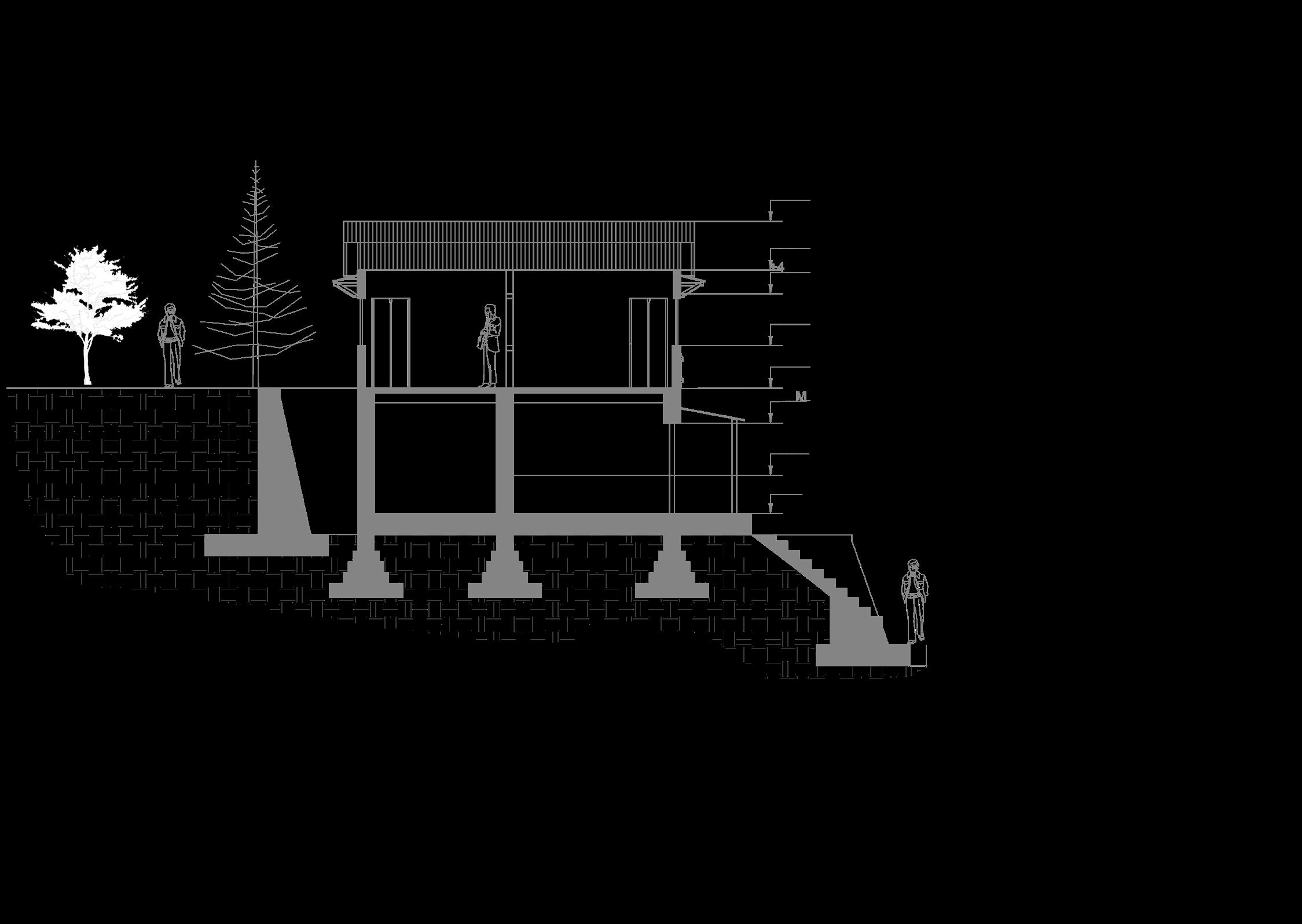
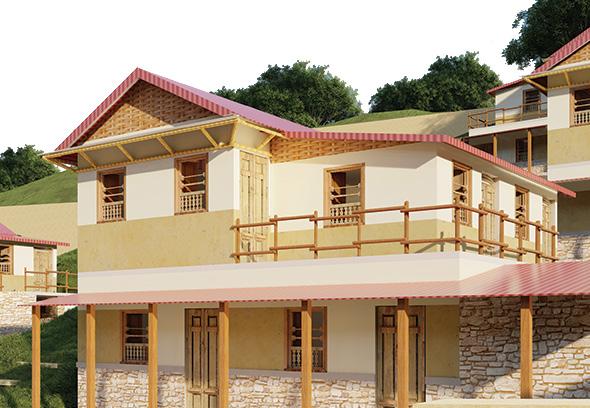
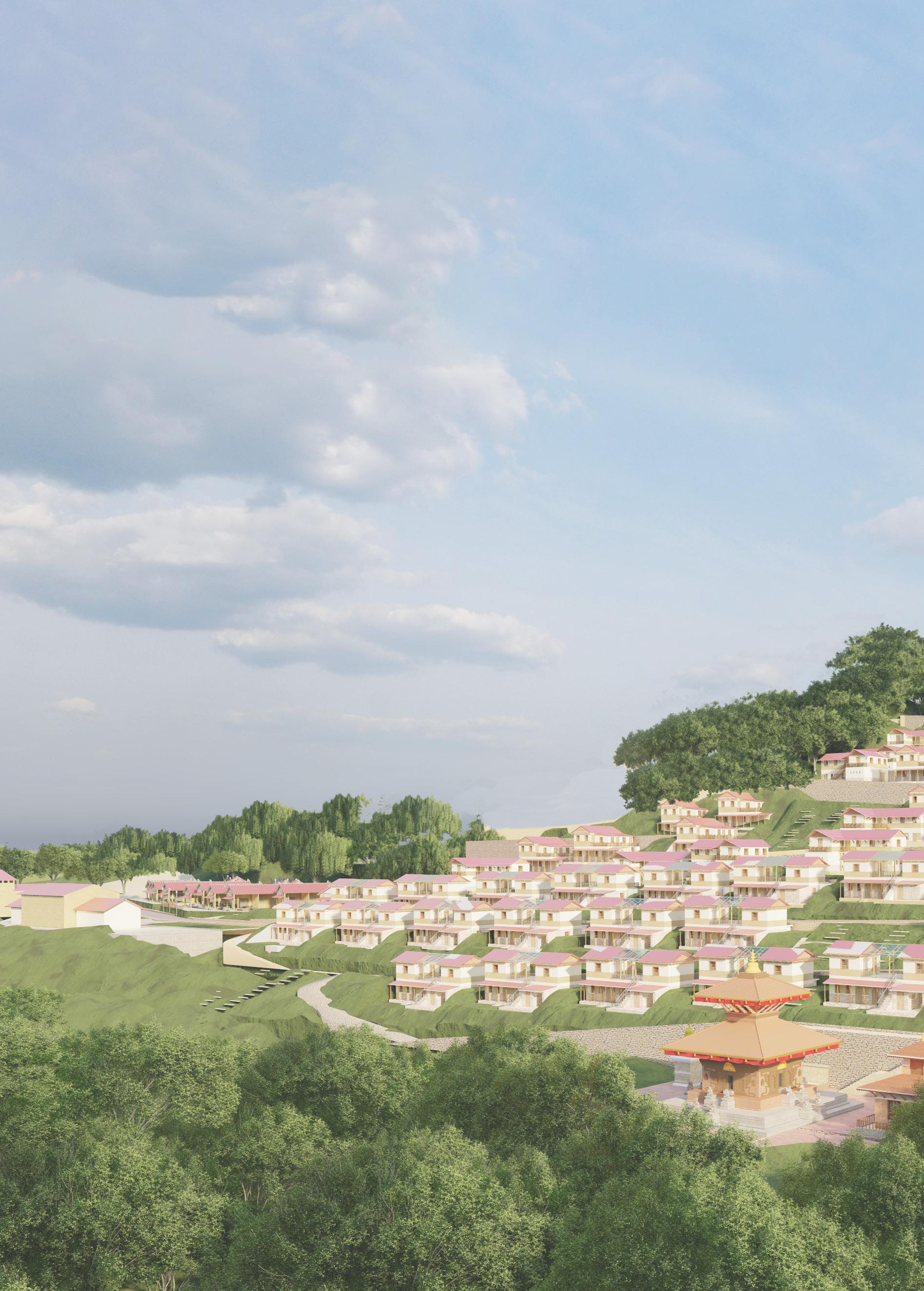
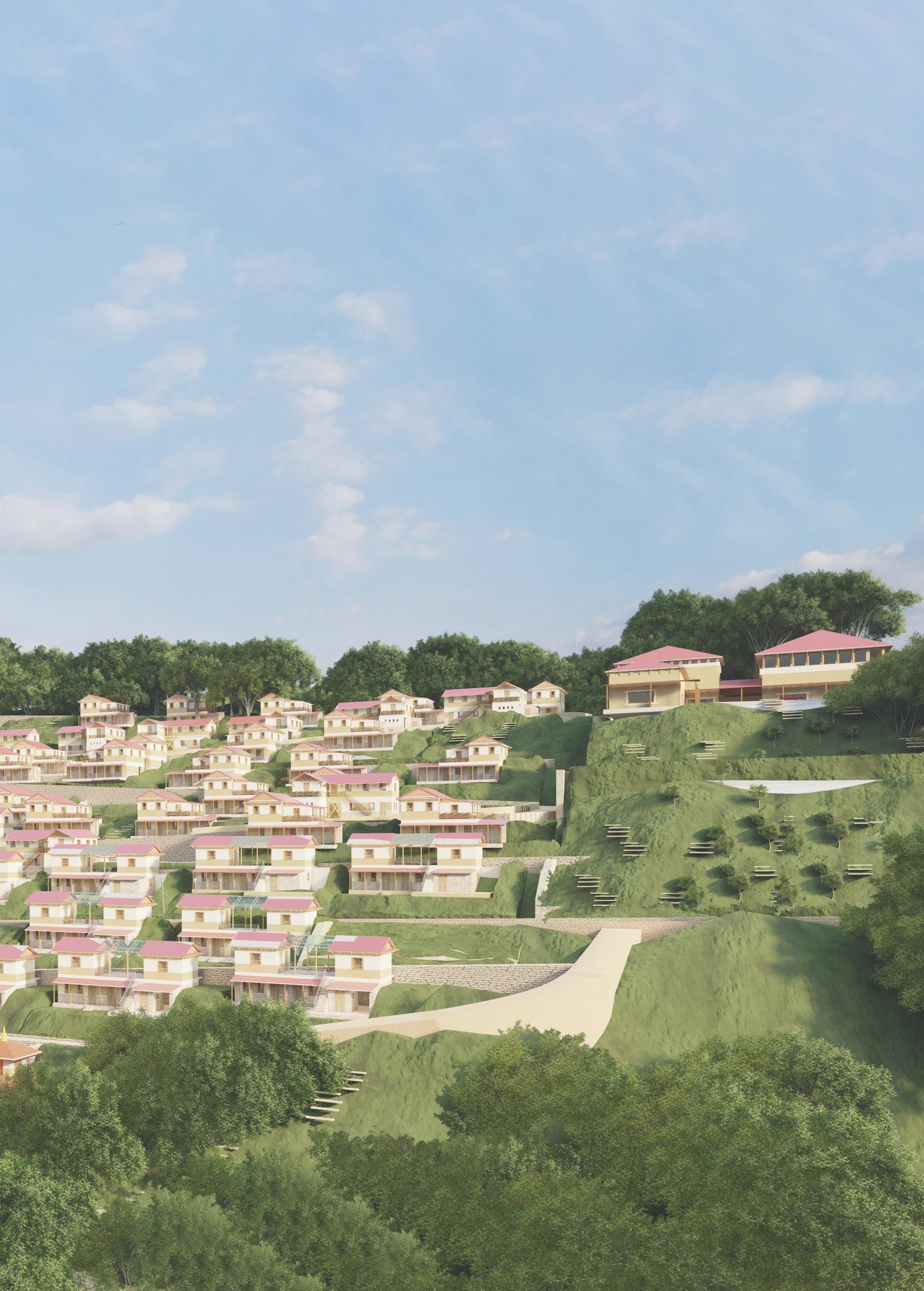
Redesigning Block D
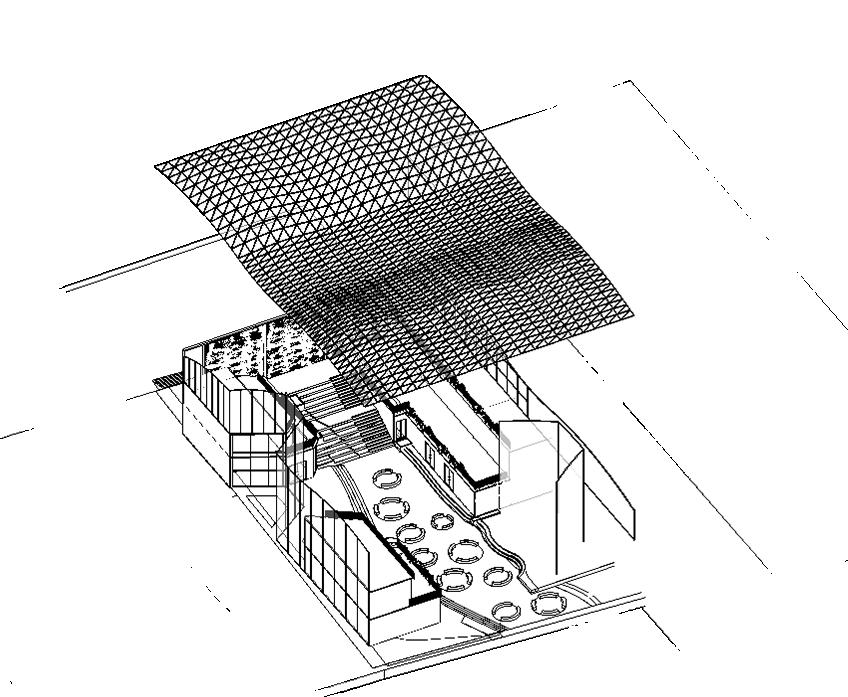
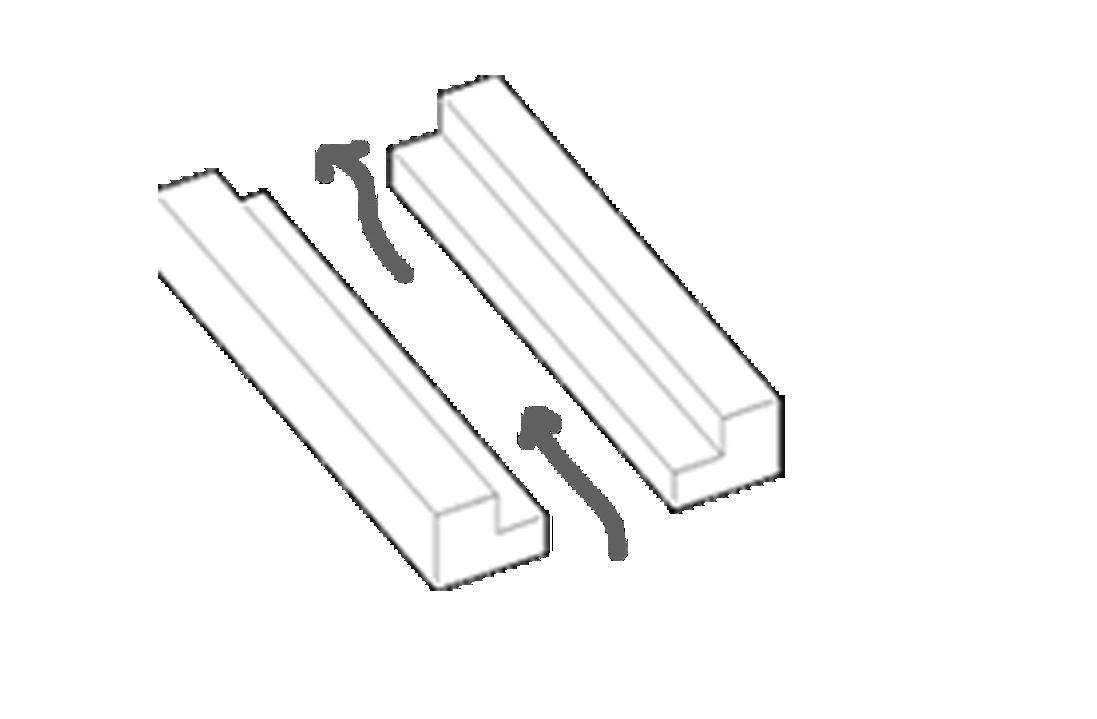
Typology: Landscape design - College block
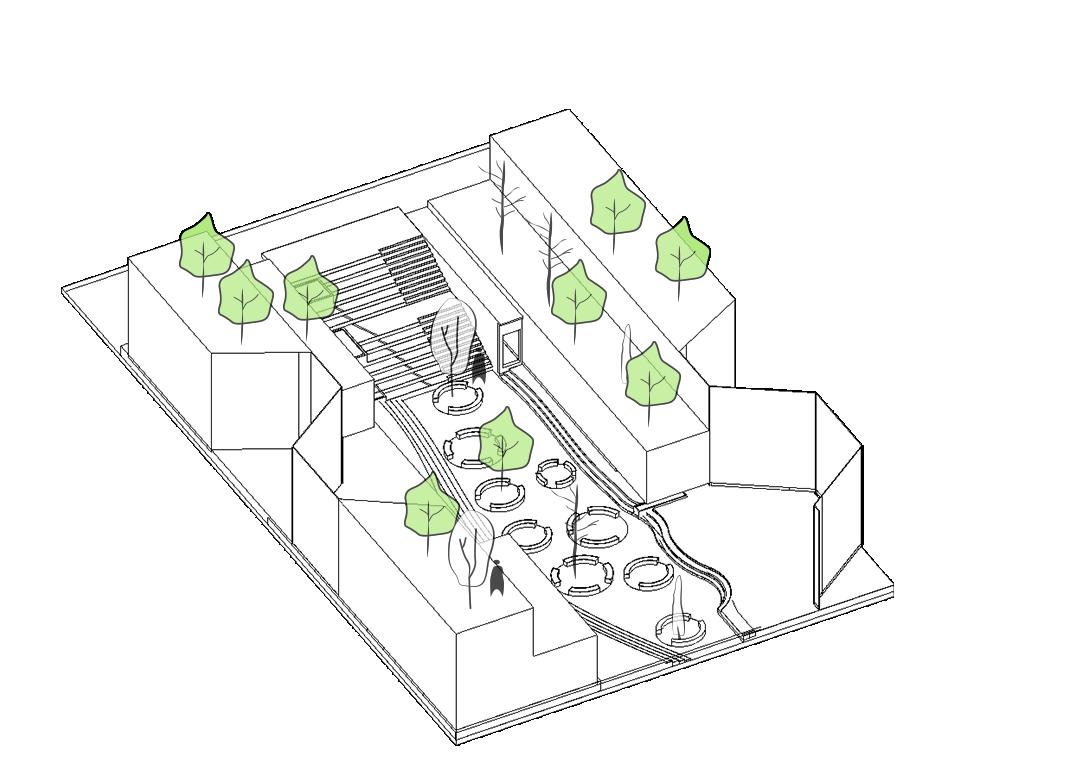
Location: IOE, Thapathali Campus, Thapathali
Client: Thapathali Campus
Type: Landscape design and site planning studio
Hindu religion from Indus valley civilization is considered to be the most scientific religion across the world. The project “The Gurukul – Back to woods” is a redesign project where a block in university campus is design by integrating landscape within it. In a ‘Gurukul’ (Sanskrit guru «teacher» or «master»; kul-”extended family”); shishyas reside together in the dense forest nearby a water source, learn from the guru and help the guru in his dayto-day life. The idea of learning by surrounding oneself with serenity, within the premise of nature was prevalent from ancient times. Inspired from the same, an attempt to create a forest with wild plants, large trees with organic placement and interesting roof to play with the light and shadow within the classroom was done to stimulate the environment same as the Gurukul. The trees and the roof garden reduce the heat island barrier and stimulates visual senses and provides a safe outdoor space for students. A simple form is selected in which two blocks facing one another is placed with the stretch of urban forset in the middle. The ends of forest space is provided with an amphitheatre inspired staircase which acts as a seating space as well as the staircase. The gravel in central corridor provides more natural feeling to the space and also acts as a tactile sensory element while walking. Warm natural color pallette is used where as variety of planters as per the climate is used. The interesting roof design also allows to create an artificial green house for some plants which ensures that different type of plants can grow in the area. Other design feature includes green wall and roof plantation to reduce heat island effect and noise barrier as mentioned.
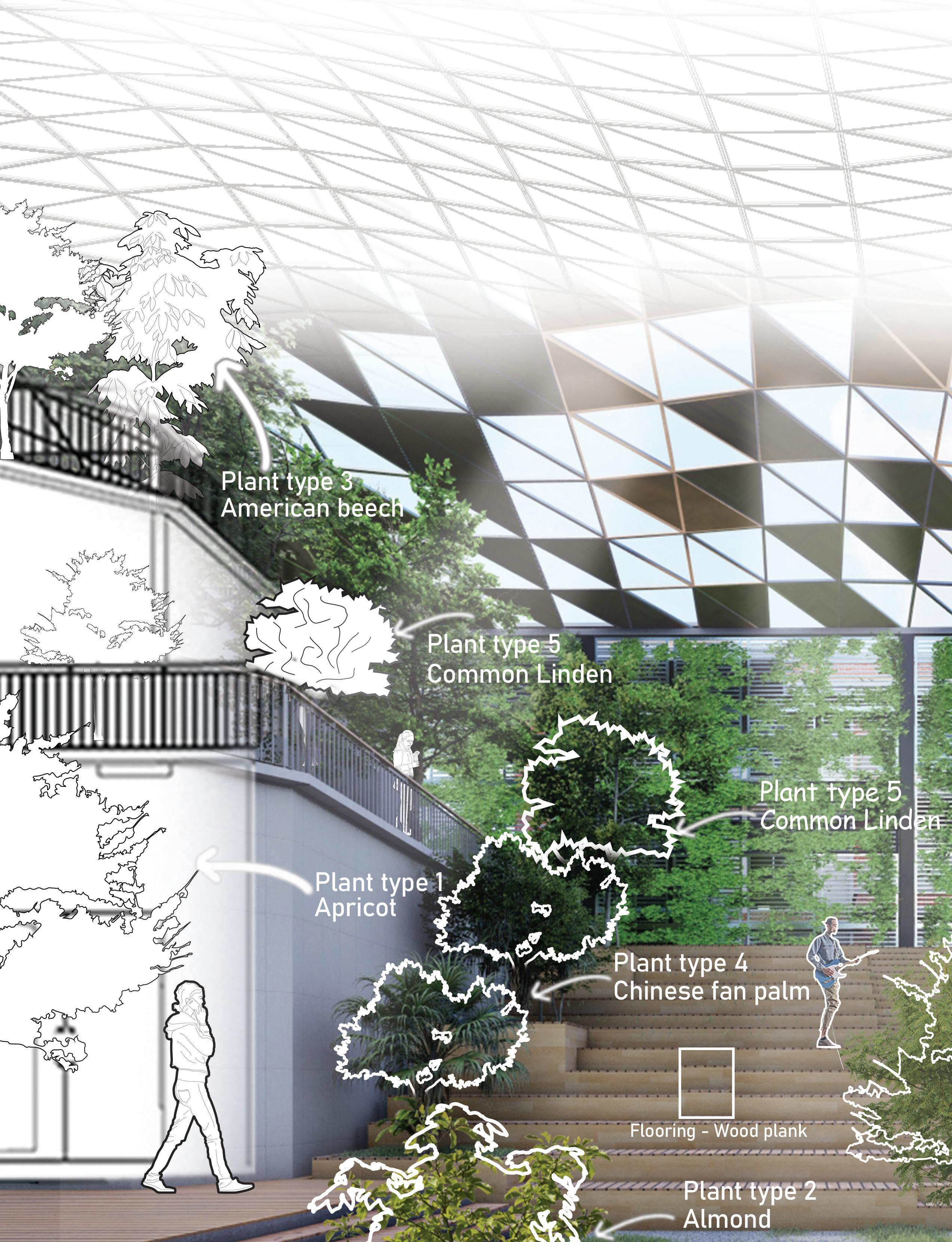

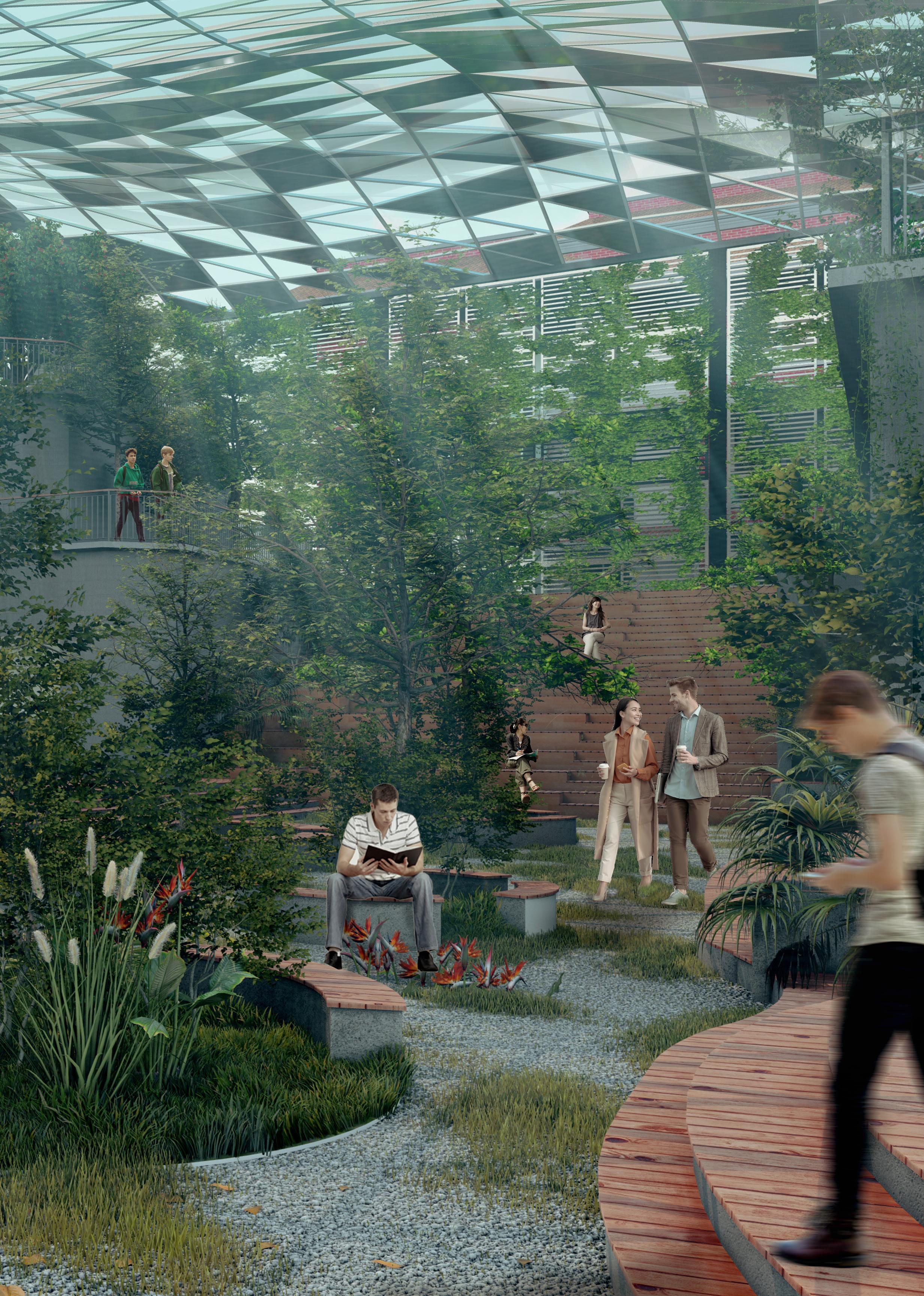
Byd Showroom Design
A car showroom interior and exterior design at Naxal
Typology: Car Showroom
Location: Naxal, Narayanchaur, Kathmandu
Client: BYD
Type: Live project-Internship work
A interor and exterior design project which aims to design a welcoming and spacious space for car display and dealearship. The design concept revolves around functionality and provision of adequate areas for the display of vehicles. The front portion of the showroom is solely provided to the car display and showcasing whereas the functional area is provided in the rear side of the showroom. The pathway leads to the maintainance and garage area where the vehicles are led for servicing and modification. The spaces other than the showroom includes, meeting area, pantry, administration area and show on. The space is provided with led screens and lights to provide a vibe of a showroom. The cobe light makes the ambience more soothing and welcoming to the visitors.
As the BYD is an international franchise the design had certain restrictions for the colors and style. Despite the constraints , some personal touch is added to the space for uniqueness. About the materials, steel frame and truss is used for the upper floor and mezzanine whereas regular frame structure is used for the rest of the structure. As the showroom had design constraints the structure seemed typical but was functional from every aspects. Since, the showroom faces the road from one side only, it is facilitated with toughned glass windows with circular metal columns. The columns support truss and glasses and creates a robust and modern feel as well. Overall, the project attempts to be added as a new landmark in the Naxal area.
D:\Alamode Internship\byd
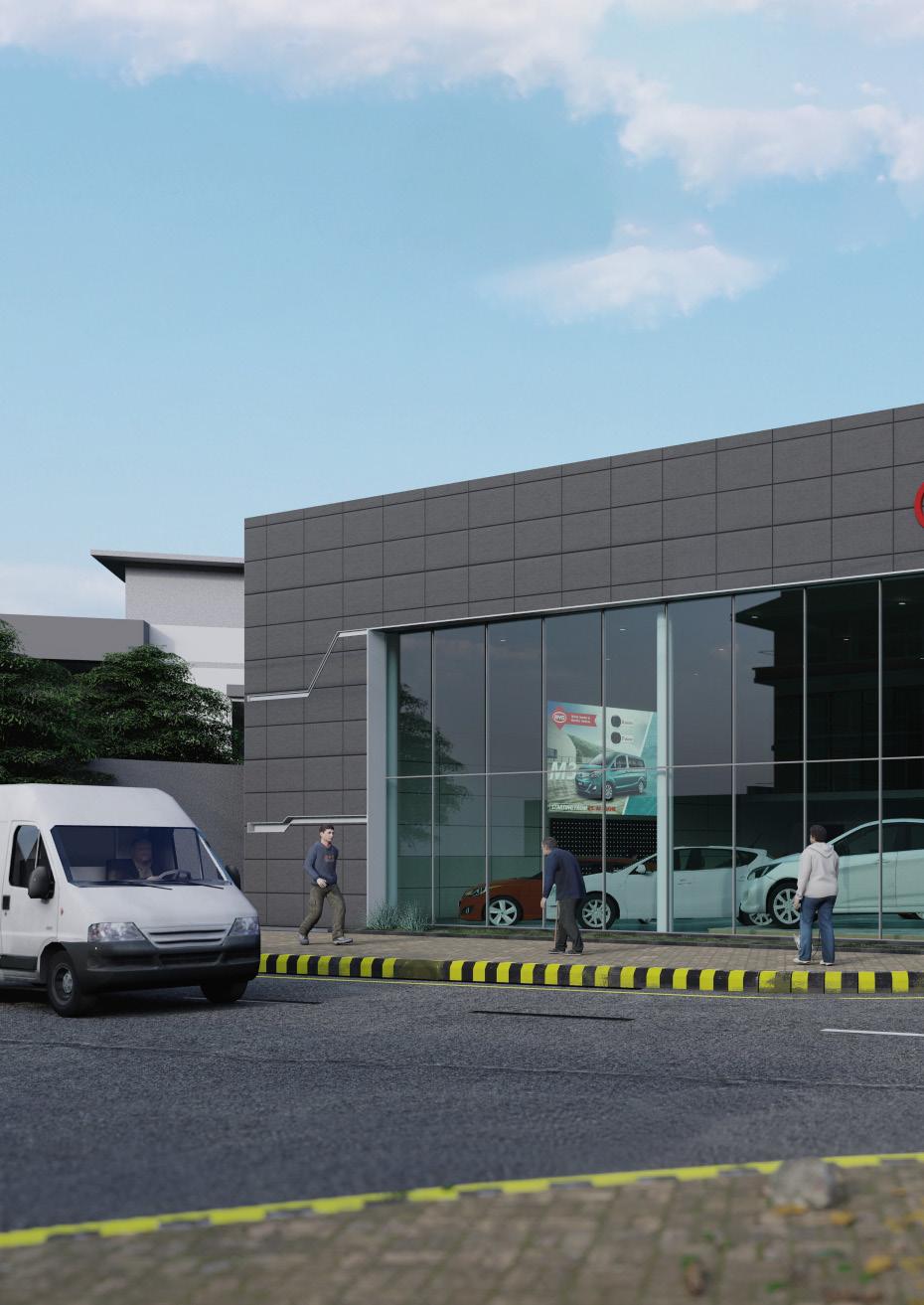
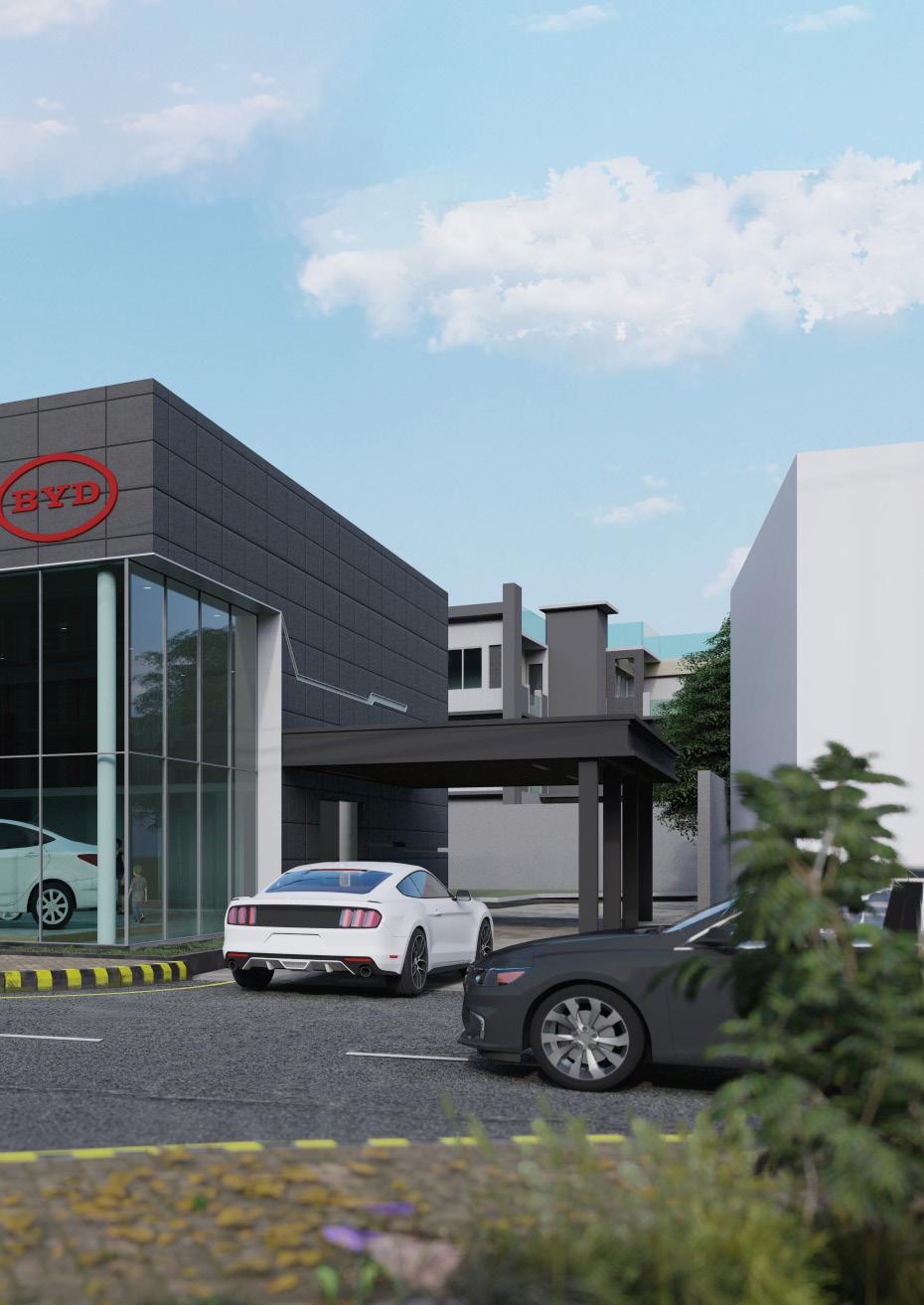
Miscellaneous Works
Works related to graphic design, art and paintings
As a part of miscellaneous works, Logo designing along with other form of graphic designing such as posters, banners and ads etc was done. The two tyres nepal is a motorcycle repair company of which I was assigned to design a logo. The two tyre concept along with the bolt symbolizing the motorcycle workshop is seen in the logo with the contrasting color used to grab the attention of viewer.
A corporate logo for the company Kothat is also designed which is derived from the initials of the Kothar Group. The young entrepreneurs from are teamed up to do business in various field of education, abroad studies etc of which a logo was to be designed. The logo is kept simple and minimal and since the company is established by youths, the orange color signifies excitement and youthfullness.
